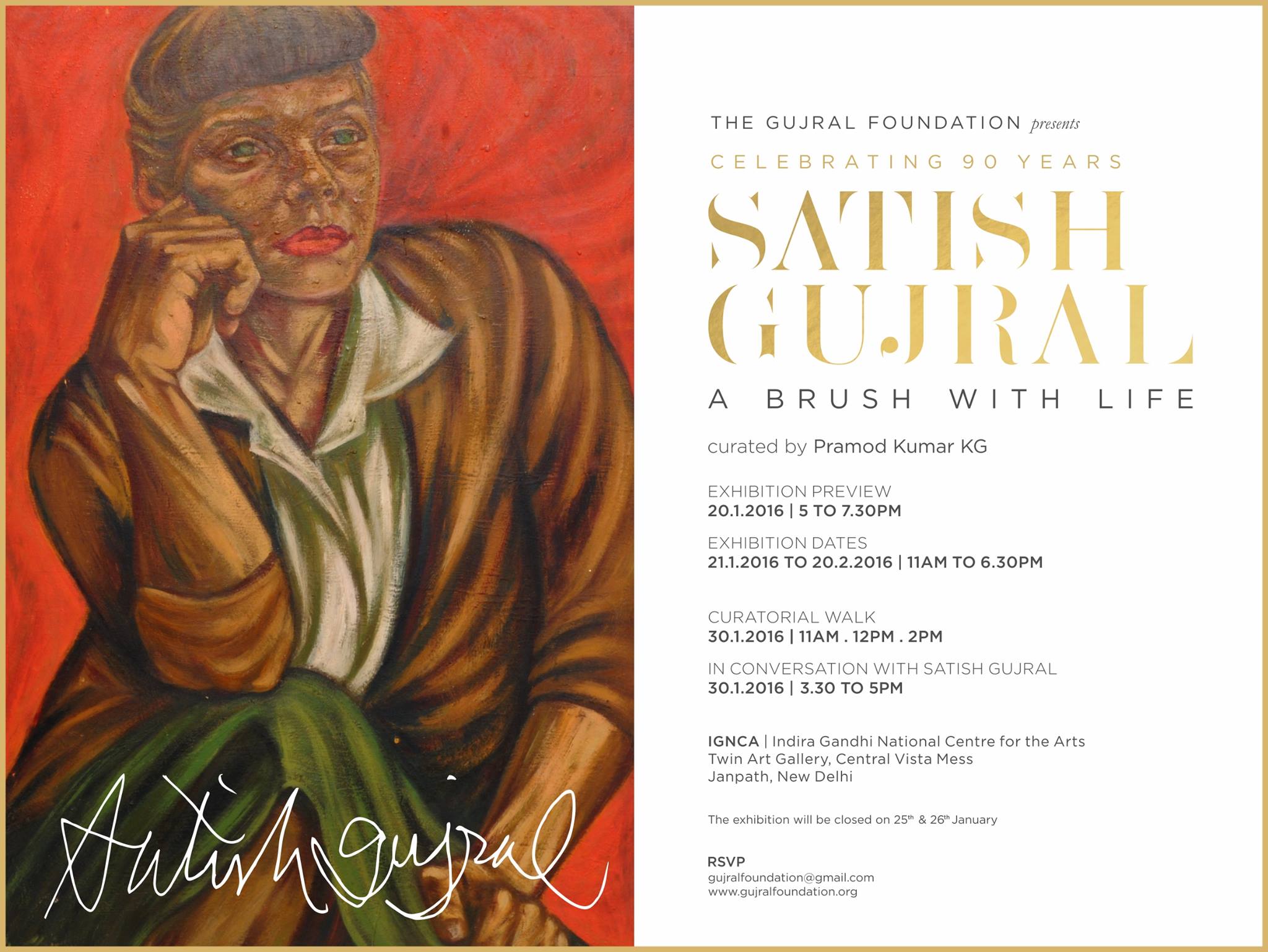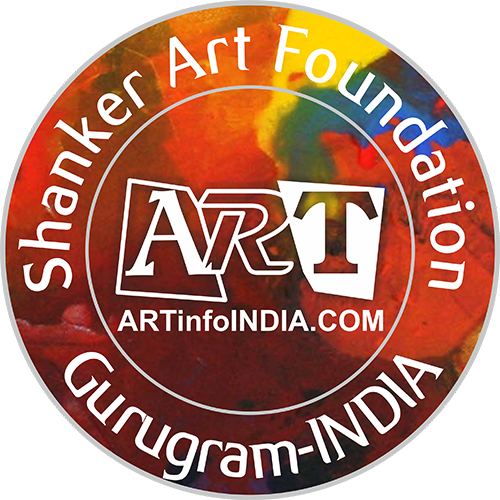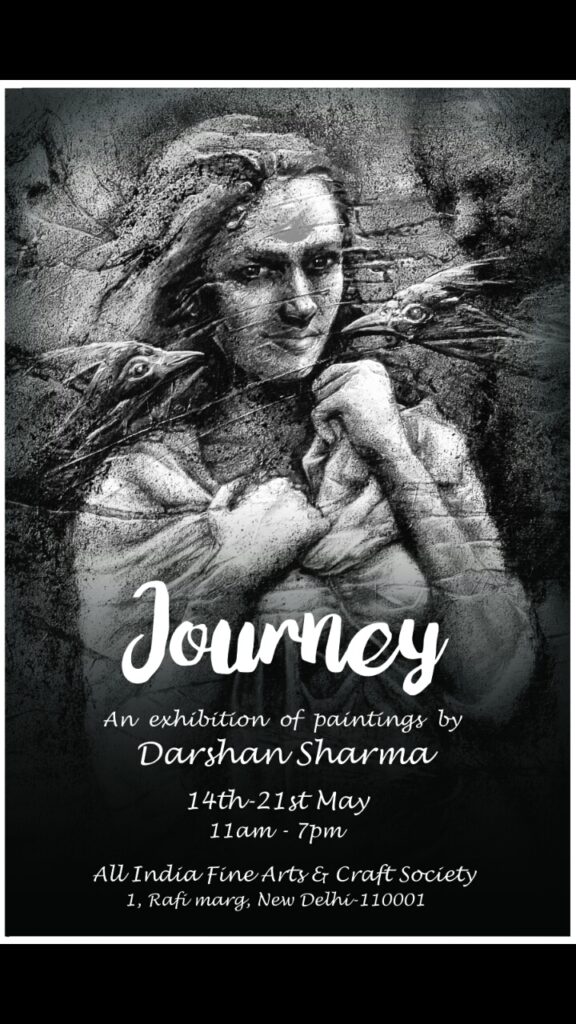Satish Gujral : A Brush with Life curated by Pramod Kumar KG
Marking Satish Gujral’s 90th birthday this year the exhibition pays homage to one of India’s most celebrated artists and provides a rare opportunity for a closer look at the breadth of Gujral’s work as well as a deeper understanding of the man behind the work and diversity of his artistic career.
This month-long exhibition will draw from the key artistic moments of Gujral’s life and will act as a tribute to the zeitgeist of modernism as seen and portrayed by him. Over 70 original works of art will be juxtaposed with rare archival photographs, the remarkable people from the 20th century who touched his life and vintage images of works that have long left public memory.
The versatile talent and vast oeuvre of Satish Gujral mirrors the trials and tribulations of a fledgling nation. Gujral began his career in 1947 with dramatic paintings named the ‘partition series’ that captured and symbolized the trauma of the subcontinent’s partition resulting in the creation of India and Pakistan. Crucially, memory as metaphor shadows his work, with characters appearing as leitmotifs across the many mediums he was to work with over the succeeding six decades: sketches to collages, abstract paintings to narrative depictions of the human condition.
His work entered another epoch as he delved into sculpture using stone, metals and resin alongside elaborate forays into ceramics, a preferred material for his iconic murals across north India that had been inspired by his work with Diego Rivera in Mexico in the early 1950s. This eventually led him to architecture and his buildings have a distinct footprint derived from his quintessential style. In his career of over 70 years Gujral is perhaps the only modern Indian artist to have worked in such diverse mediums and forged such varied artistic paths. Today, his art has come full circle with newer works evocatively recalling earlier themes.
About the artist
Satish Gujral was born in 1925 in Jhelum, Pakistan. His childhood love of drawing and literature developed into a passion for the arts that was nurtured through the years he spent studying graphics and sculpture at the Mayo School of Arts, Lahore beginning in 1939, followed by a stint at the Sir JJ School of Art in Bombay in 1944. His indifferent health (which had resulted in a hearing impairment at the age of eight) often proved a challenge, but did not prevent his winning a scholarship in 1952 to study at Palacio Nacional de Bellas Artes in Mexico, where he was apprenticed to the renowned artists Diego Rivera and David Alfaro Siqueiros.
From the 80s when Gujral began his practice, until today, both his paintings and sculptures have diversified in terms of content and material. He has exhibited his works worldwide including New York, Montreal, Paris, Berlin and Tokyo. Gujral’s large-scale murals stimulated his interest in their immediate architectural context. He made murals on a range of public buildings such as the Punjab University, Chandigarh; Shastri Bhavan and the Delhi High Court, both in New Delhi; the Oberoi Hotels in New Delhi and Bombay; and the India Culture Centre, Mauritius. They also include landmarks such as the World Trade Fair and World Trade Centre, New York. He subsequently developed a practice as an architect and has designed a variety of buildings around the world: the Belgian Embassy, and UNESCO Headquarters in New Delhi; a palace commissioned by the late King Fahd of Saudi Arabia; interiors for the residence of the King of Bahrain; Ramgoolam Memorial, and Indira Gandhi Centre for Indian Culture, Mauritius; a proposal for the Indian Embassy in Kathmandu; Goa University; Research Centre for CMC, Hyderabad; and the Ambedkar Memorial in Lucknow, amongst others.
Gujral has received the State Honour from the Government of Punjab; Delhi Citizen Council Honour, New Delhi; Da Vinci Award and Order of the Aztec Eagle from the Mexican government; and Order of the Crown from the Belgium Embassy for architecture. In recognition of his lifetime achievements the President of India awarded Gujral the Padma Vibhushan in 1999, country’s second highest civilian honour.





